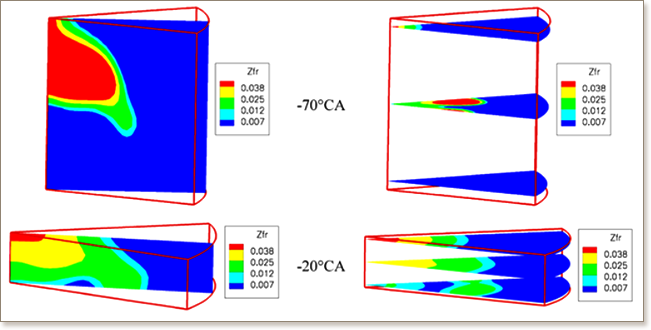Computational study of stratified combustion in optical diesel engine
M. Jaasim, F.E. Hernández Pérez, S. Vedharaj, R. Vallinayagam, B. Johansson, H.G. Im

Full cycle simulations of KAUST optical diesel engine were conducted in order to provide insights into the details of fuel spray, mixing, and combustion characteristics at different start of injection (SOI) conditions. Although optical diagnostics provide valuable information, the high fidelity simulations with matched parametric conditions improve fundamental understanding of relevant physical and chemical processes by accessing additional observables such as the local mixture distribution, intermediate species concentrations, and detailed chemical reaction rates. Commercial software, CONVERGE™, was used as the main simulation tool, with the Reynolds averaged Navier-Stokes (RANS) turbulence model and the multi-zone (SAGE) combustion model to compute the chemical reaction terms. SOI is varied from late compression ignition (CI) to early partially premixed combustion (PPC) conditions. The simulation results revealed a stronger correlation between fuel injection timing and combustion phasing for late SOI conditions, whereas the combustion phasing starts to decouple from SOI for early SOI cases. The predictions are consistent with the experimental observations, in terms of the overall trends in combustion and emission characteristics, while the high fidelity simulations provided further insights into the effects of mixture stratifications resulting from different SOI conditions.